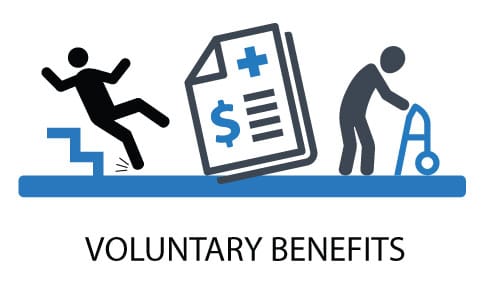
What is a Roth 401(k)?
Just as its name suggests, a Roth 401(k) combines the features of a traditional 401(k) plan with those of a Roth IRA. It is offered by employers just like a traditional 401(k), but similar to a Roth IRA, contributions to a Roth 401(k) are made with after-tax money.
With a Roth 401(k), you pay taxes at your regular income tax rate on your retirement contributions. With a regular 401(k), retirement contributions are not taxed at the time of deferral, but the contributions (and earnings on those contributions) are taxed at the time of withdrawal. However, withdrawals of Roth contributions (including earnings on those contributions) are tax-free if withdrawals begin after age 59½ and five years have passed since you first made Roth contributions to the 401(k) plan.
Continue reading below to learn more about the Roth 401(k), or reach out to one of our employee benefits experts who can walk you through your options.
Are you eligible?
You are eligible to make Roth contributions if you participate in your employer’s 401(k) plan and your employer has chosen to offer a Roth 401(k) feature.
How do you participate?
Under a typical plan design, you will receive the same matching contributions that you would have received had you contributed on a pre-tax basis to a traditional 401(k) account. You are not taxed on employer matches at the time the matching contributions are made. Matching contributions accumulate in a separate account under the 401(k) plan that will be taxed as ordinary income at withdrawal.
Will you still be entitled to matching contributions?
Under a typical plan design, you will receive the same matching contributions that you would have received had you contributed on a pre-tax basis to a traditional 401(k) account. You are not taxed on employer matches at the time the matching contributions are made. Matching contributions accumulate in a separate account under the 401(k) plan that will be taxed as ordinary income at withdrawal.
How much can I contribute?
Your combined contributions to both traditional and Roth 401(k) plans cannot exceed $19,500 ($25,500 for employees 50 or over) in 2021.
How does a Roth 401(k) differ from a traditional 401(k)?
The primary difference between the two plans is in the way your contributions and withdrawals are taxed. The contributions made to a traditional 401(k) account reduce the amount of income you have to report that year, resulting in a smaller tax bill. You pay taxes on those contributions, plus the investment earnings, when withdrawing funds from the account.
There is no difference in investment opportunity between a traditional 401(k) and a Roth 401(k).
However, with a Roth 401(k), your contributions do not reduce your taxes in the year of the contributions, but all of the earnings in that account will be tax-free as long as the account exists. If certain requirements are met, you do not pay taxes on the Roth contributions, including the investment earnings, upon withdrawal.
What is the five-year requirement?
You must hold your Roth account for five years, and be over age 59½ or disabled in order take a tax-free qualified distribution. The five-year clock starts on the first day of the first year in which you make a Roth 401(k) contribution to the plan. The five-year rule applies to each Roth 401(k) plan account you may have. The age of your Roth 401(k) does not transfer to your Roth IRA when you roll over an account. Instead, the age of the Roth IRA will govern.
What happens if you take a nonqualified distribution?
If you do not meet the requirements for a qualified distribution and take money out of your Roth 401(k) without rolling it into another Roth account, you are required to report taxable income in proportion to the account’s earnings when you take the distribution. For instance, if 70% of the money in your account is from contributions, and 30% is from earnings, your distribution will be 30% taxable.
Will you have access to your money?
You will have the same access to your Roth 401(k) as you have to your traditional 401(k) plan.
Can you roll your Roth 401(k) to a new employer?
You can roll Roth money from one employer to another only if your new employer accepts Roth 401(k) accounts. If your new employer does not offer this type of plan, you will have to leave the money with the old employer or roll the account into a Roth IRA.
Can you roll your current plan account into a Roth IRA?
You may make a conversion rollover of your current plan account to a Roth IRA. A conversion rollover means that you convert your pretax contributions to after-tax Roth contributions by paying taxes at the time of rollover. Effective Jan. 1, 2010, the income limits for making conversion rollovers to Roth IRAs were eliminated. In addition, your plan may allow you to convert your pretax contributions to after-tax Roth contributions without taking your money out of the plan. These in-plan conversions are an optional plan design feature.
What are the advantages of a Roth 401(k)?
The following are the benefits of a Roth 401(k):
- Current contributions are taxed but distributions, including profits, are tax-free if certain requirements are satisfied.
- No minimum distribution requirement at age 70½ (age 72 for participants who attain age 70½ after Dec. 31, 2019) if rolled to a Roth IRA prior to that age.
- Tax-free distribution to heirs upon your death.
- No income limitations—anyone can contribute to a Roth 401(k).
Are there disadvantages to the Roth 401(k)?
The following are the potential disadvantages of a Roth 401(k):
- No current-year tax deduction. With traditional 401(k) contributions, you receive reduced taxable income in the current year. With a Roth 401(k), you have to wait for a tax benefit.
- To receive a tax benefit, you generally need to wait to take a distribution until the end of the five-year holding period and until you reach age 59½.
- To compare tax savings, it is difficult to predict if your tax bracket will be higher or lower in the future.
Is a Roth 401(k) right for you?
The answer to this question largely depends on what tax bracket you are in today and which tax bracket you expect to be in upon retirement. If you are early in your career, are making a fairly modest salary and anticipate being in a higher tax bracket upon retirement, the Roth 401(k) may appeal to you. This is because you are paying taxes on contributions today at a lower rate and will be able to withdraw that money without paying any taxes later.
Higher paid workers can also benefit from a Roth 401(k) because they are generally locked out of other savings vehicles, such as the Roth IRA, that accumulate profits tax-free. The tax-free withdrawals can also help highly paid workers manage their tax situation in retirement.
For workers in their 40s and 50s, the choice to contribute to a Roth 401(k) may not be so easy. With this type of plan, a participant will pay taxes up front when he or she is in a high tax bracket and will then withdraw the money when the participant is in a lower tax bracket. Those who will be in a lower tax bracket during retirement are probably better off contributing to a pretax 401(k).
Furthermore, the greater amount of time you have before retirement, the greater the tax benefits are to you because you are exempting more investment earnings from taxation.
Consult with your financial planner before making a decision on whether traditional 401(k) deferrals or Roth contributions are best for you.
The chart below provides a chart comparing the main facets of traditional 401(k) and Roth 401(k) plans.
| Characteristic | Roth 401(k) Account | Traditional 401(k) Account |
| Contributions | Employee elective contributions are made with after-tax dollars. | Employee elective contributions are made with before-tax dollars. |
| Income
Limits |
No income level to participate. | No income level to participate. |
| Maximum
Elective Contribution |
Aggregate* employee elective contributions limited to $19,500 in 2021 ($25,500 for employees 50 or over). | Aggregate* employee elective contributions limited to $19,500 in 2021 ($25,500 for employees 50 or over). |
| Taxation of
Withdrawals |
Withdrawals of contributions and earnings are not taxed provided they are qualified distributions. For a qualified distribution, the Roth account must be held for at least five years and withdrawals must be made:
• On account of disability, • On or after death, or • On or after attainment of age 59½. |
Withdrawals of contributions and earnings are taxed. |
| Required
Distributions |
Distributions must begin no later than age 70½ (age 72 for participants who attain age 70½ after Dec. 31, 2019), unless still working and not at least a 5% owner. | Distributions must begin no later than age 70½ (age 72 for participants who attain age 70½ after Dec. 31, 2019), unless still working and not at least a 5% owner. |
If you’re interested in offering your business’ employees a competitive 401(k) package, our employee benefits experts can walk you through your options.




